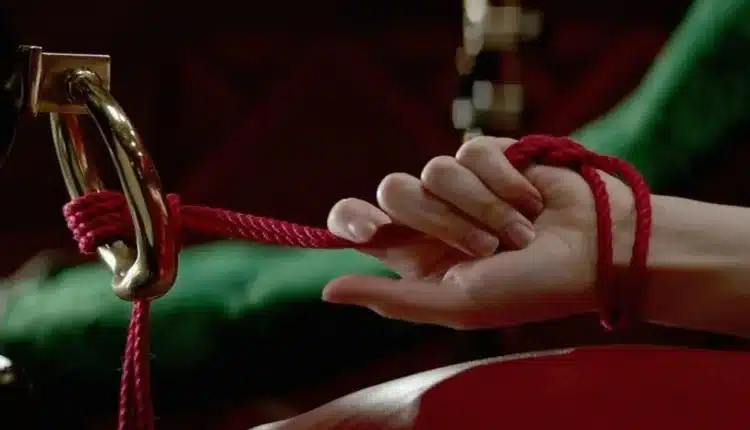Bondage Basics: How to Start Tying Without Being Ashamed
If you’re curious about bondage but not sure where to start, you’re not alone. The idea of tying someone up—or being tied up—sizzles and terrifies all at once. Most assume it’ll be hot and simple. but then there’s the wake-up call: tangled ropes, the nervous snicker, and that awkward moment when both you and your partner have no idea what to do next.
The reality? Bondage doesn’t have to be art or production. It simply needs to be intentional, consensual, and safe. If you’re new to kink and want to dip your toes in or want to bring a fantasy to life, this book will guide you through it with ease.
Awkward Is Normal at First—Own It
Let’s have it out: you will feel self-conscious the first time. Almost everyone does. You’re doing something new, personal, and way out of your routine. That awkwardness is not an indication that you’re doing it wrong—it’s what makes it so exciting.
The most you can do is take it all in the first place. Laugh at yourself if you’re embarrassed. Talk about what you’re doing. Don’t act like you’re in a business situation—because you’re not. You’re learning, exploring, and building trust. That’s the part that really matters.
Begin with the Proper Tools – Not Complicated Knots
You don’t need to learn complicated rope patterns or suspension techniques to begin. It would be best if you begin with something easy and casual such as soft bondage cuffs or a starter rope kit. These give you the shape and constraint that you want without you having to learn complicated knots.
A plain rope tie around wrists or ankles is more than enough to give that sense of submission and domination. If you absolutely want something easy, use cuffs with release mechanisms. They are ideal for beginners because they are secure but not too intimidating.
Tip: If you are tying, use natural fiber ropes like cotton or jute. They are gentle on skin and easy to work with, especially if your hands are lightly trembly from nerves.
Speak Before You Tie—It Boosts Your Confidence
It does sort of feel odd to sit down and discuss rules first, but actually, it builds more rapport. Ask each other things like:
- “What kind of restraint do you prefer?”
- “Are there parts of your body you don’t want to bind?”
- Would you like to be blindfolded or to know everything?
These conversations don’t disrupt the mood—they establish it. The clearer you are, the more comfortable you’ll be in the moment. And it is this comfort that frees you into your role—whether you’re tying or being tied.
Focus on the Feeling Rather Than the Ideal Method
Bondage is not about knots—it’s about creating sensation, trust, and surrender. So don’t worry if the rope isn’t symmetrical or the cuffs not aligned. What’s more important is how you’re touching your partner as you bind them, what you’re telling them, how you’re guiding their body.
Slow down. Observe them. Talk. Let your partner know they’re doing well. All of this builds tension and strengthens the bond between you. That’s what makes simple bondage so emotionally charged and memorable.
Other couples like to try more interactive ones such as legbinder bondage, where legs are tied together to restrict movement and increase vulnerability. It’s a straightforward addition that can enhance restraint satisfaction—without ropes from head to toe.
Make the Mood without Overthinking
A subtle mood change will work. You don’t need to burn candles and silk sheets (if that’s your thing), but turning off lights, listening to soothing music, or just being gentle as you get undressed can alter the atmosphere in the room.
When the outside world fades away and the only thing you can sense is the two of you, even the most trivial restraint is intensely intimate.
Some couples find it fun to use a leather sex sling in bondage play—not for the novelty, but because it has added physical control and different angle of contact. If you’re into access restraint, it’s an apparatus that is worth experimenting once you’re more comfortable with the basics.
Aftercare: The Aspect Nobody Talks About Enough
When the ropes come off and the cuffs are removed, that does not always mean the experience is finished. Aftercare is where you reconnect and catch up on an emotional level. Your partner might need a hug, water, or simply some quiet time sleeping next to you.
This part builds trust more than anything else. And when you care for someone after you’ve had control over them—or vice versa—it deepens the entire experience.
The Right Equipment Makes Everything Feel More Natural
When you’re using beginner-friendly gear, it all just feels more comfortable. The cuffs are more comfortable. The ropes move more smoothly. And there’s less fumbling around, so you can concentrate on each other.
If you are new to BDSM, we recommend starting with a bondage starter kit that includes smooth ropes or cuffs, a blindfold, and simple instructions. These starter kits take the pressure off and make you feel prepared, not overwhelmed.
Either being tied up or being tied, the goal is to be secure, attached, and turned on—not concerned about how to make it happen.
Final Thoughts: It’s Okay to Learn on the Go
No one starts out thinking they know how to dominate or submit, how to tie a decent knot, or how to “do” a scene. It is all learned through doing—and more accurately, through communication and curiosity.
The most enjoyable bondage experiences arise from arriving authentically, being open to feeling a bit uncomfortable, and understanding how it feels, not how it appears.
So if you’re standing there with a rope in hand and shaking hands, wondering where to begin—breathe. You’ve already begun.


